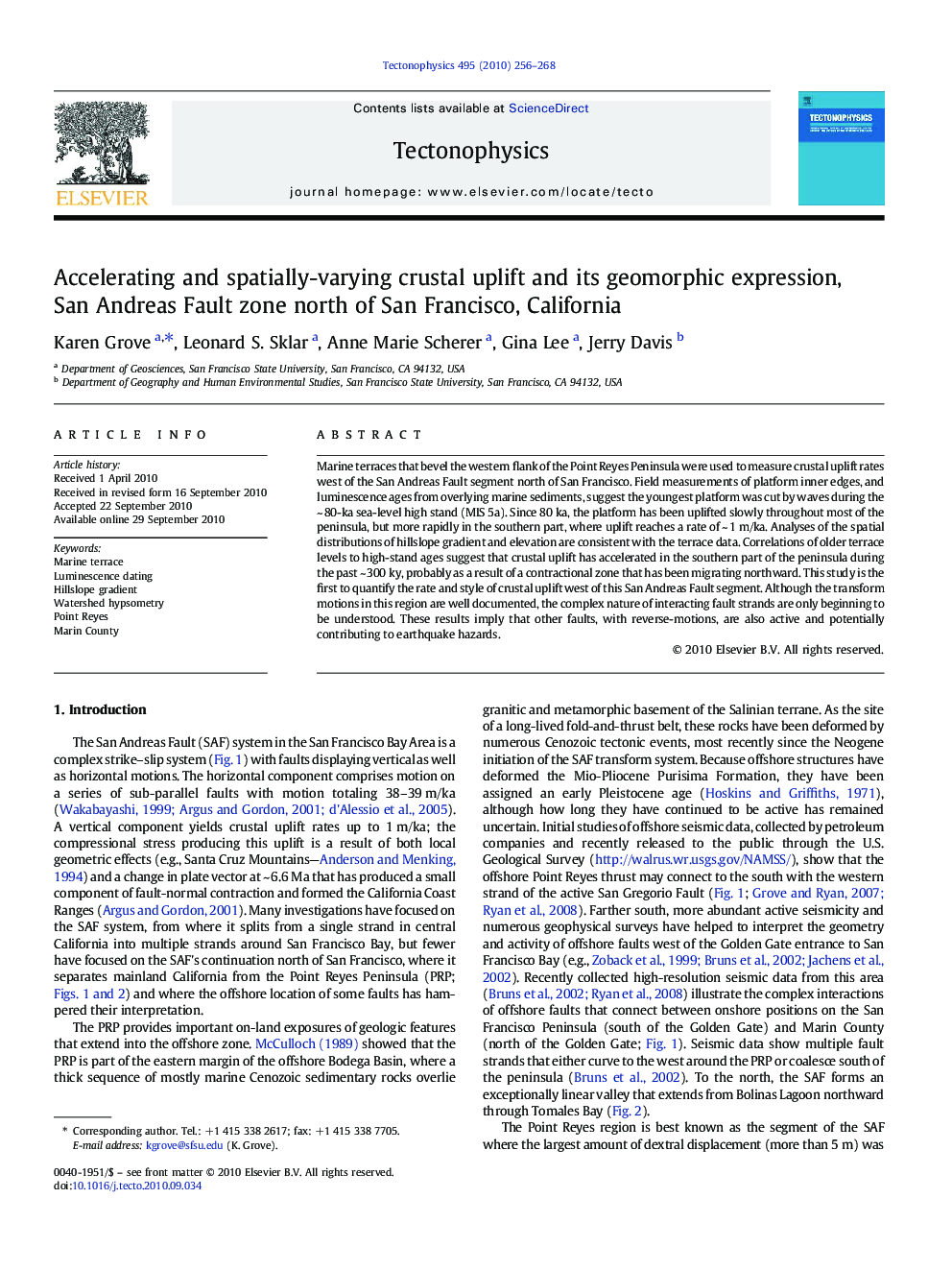| Article ID | Journal | Published Year | Pages | File Type |
|---|---|---|---|---|
| 4693297 | Tectonophysics | 2010 | 13 Pages |
Marine terraces that bevel the western flank of the Point Reyes Peninsula were used to measure crustal uplift rates west of the San Andreas Fault segment north of San Francisco. Field measurements of platform inner edges, and luminescence ages from overlying marine sediments, suggest the youngest platform was cut by waves during the ~ 80-ka sea-level high stand (MIS 5a). Since 80 ka, the platform has been uplifted slowly throughout most of the peninsula, but more rapidly in the southern part, where uplift reaches a rate of ~ 1 m/ka. Analyses of the spatial distributions of hillslope gradient and elevation are consistent with the terrace data. Correlations of older terrace levels to high-stand ages suggest that crustal uplift has accelerated in the southern part of the peninsula during the past ~ 300 ky, probably as a result of a contractional zone that has been migrating northward. This study is the first to quantify the rate and style of crustal uplift west of this San Andreas Fault segment. Although the transform motions in this region are well documented, the complex nature of interacting fault strands are only beginning to be understood. These results imply that other faults, with reverse-motions, are also active and potentially contributing to earthquake hazards.
Research Highlights►The San Andreas Fault system, a transform plate boundary in the San Francisco Bay Area of California, is a complex zone of faults whose interactions produce local areas of contraction (uplift) and extension (subsidence) that can vary on short temporal and spatial scales. ►Field measurements of marine terraces on the Point Reyes Peninsula, located west of the San Andreas Fault, show that the peninsula is uplifting at a faster rate, up to 1 m/ka, at its southern end, where offshore faults may be producing contractional geometries; this uplift rate appears to have increased during the past several hundred thousand years. ►Luminescence ages suggest that the youngest marine terrace was formed ~ 80 ka, during MIS 5a; ages of older terrace surfaces are less certain but correlations to sea-level high stands suggest that they began forming at least 700 ka. ►Quantitative measures of geomorphic attributes—namely hillslope gradients and areal distributions of elevations within a suite of watersheds—are consistent with terrace data indicating crustal uplift rates increasing to the south and accelerating uplift that has produced active surface uplift and disequilibrium between rates of erosion and crustal uplift.
